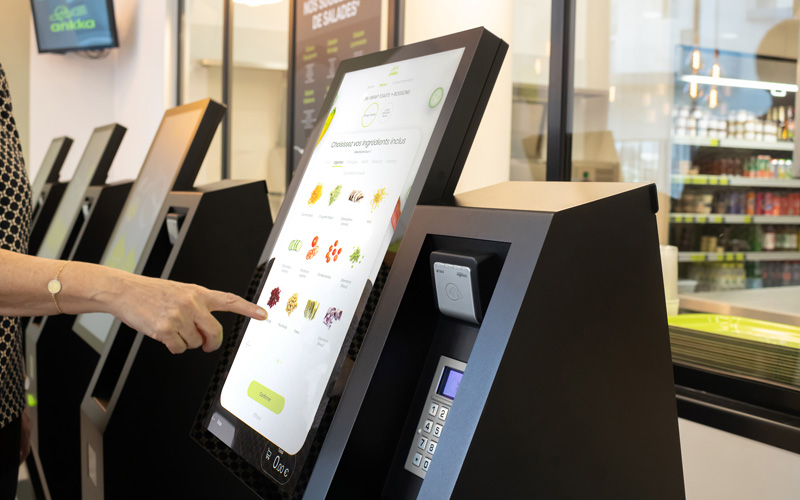In a previous blog, we set out how self-service kiosks represented a new vision for customer-centric POS in the hospitality trade, building on the work done by QSR pioneers such as McDonalds and Nando’s.
Of course, there is no one-size-fits-all solution for how the future of POS in the restaurant sector will evolve. Different operators with different priorities will want to get different things from point of sale, not least because customers will also have varying demands and expectations.
The beauty of modern technology is that it can provide the agility to meet a diverse range of needs. POS systems are no longer all about having tills at fixed points on the premises, they can operate in many different ways at once. Digitisation has unshackled POS, allowing restaurateurs to focus on shaping the optimum customer experience, with choice and flexibility at its heart.
Two technologies which really sum up this flexibility in modern hospitality EPOS solutions are online apps and Mobile POS (M-POS). You could say that these two solutions pull in polar opposite directions – restaurant apps in many ways eliminate the very concept of POS as we know it, while M-POS solutions give traditional table service a digital makeover.
The key point for businesses is they don’t have to offer just one or the other – they can utilise both, as well as kiosks, to give customers the choice of service as they want it.
Streamlining service
Restaurant apps are growing in popularity as a way to streamline service on premises. Operators that also provide takeaway services have been using apps (or third-party ordering and delivery services like Just Eat) for a number of years, reducing the resource friction of having to handle large volumes of outside calls to place orders. Ordering and paying for takeaways online or through an app is quick, simple and efficient for all parties.
What businesses are increasingly recognising is that similar benefits apply for customers eating in, too. For someone who is pressed for time, the ability to order on their smartphone as soon as they sit down, or even before they arrive at the restaurant, is a major advantage. It’s a similar story at the end of the meal, when they can pay and leave when they wish, rather than wait for a member of staff who may be busy elsewhere. Customer apps are also ideal for running loyalty and incentive schemes, making personalised offers to regular customers. It should be recognised that, as with self-service kiosks, some people just prefer to do things for themselves.
The flipside of that, of course, is that other people enjoy the human touch of being shown to their table, having a member of the waiting staff talk them through the specials menu, make recommendations and generally just engage with them. For many, that’s an important part of the restaurant-going experience, especially in the fine dining sector.
What M-POS allows waiting teams to do, is to deliver that kind of personalised at-table service with a similar level of efficiency to an online ordering system (and in fact, both apps and M-POS would be running on the same shared software platform). A waiter or waitress carrying an M-POS tablet is able to place orders quickly and efficiently by tapping items on a menu, rather than scribbling them down on a pad. This gives them more freedom to make conversation and focus on the needs of the customer, with the risk of making mistakes in taking an order greatly reduced. If something has run out, it will show up on screen immediately so the customer can be told there and then.
Overall, all of these little efficiency gains, whether provided by apps, M-POS or self-service kiosks, will also add shorter sittings as customers can be served more quickly. Not only does that allow restaurants to deliver better service the way customers want it, it also helps to increase serving volumes and therefore raise turnover.




